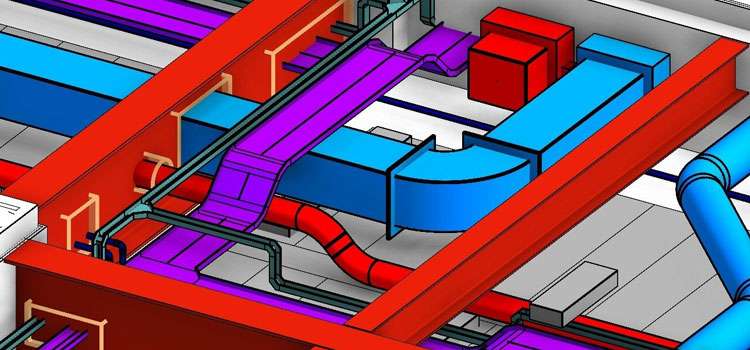In the realm of construction and architecture, seamless coordination among multiple project stakeholders is crucial. This is where BIM clash detection plays a pivotal role by identifying discrepancies or “clashes” in various project models during the early stages of a project.
Each clash that is resolved during the design phase translates into one less potential issue that could have led to project delays and increased costs.
Understanding BIM Clash Detection
To comprehend BIM clash detection Services, let’s begin by defining what a “clash” means. A clash arises when components within a constructed asset lack spatial coordination. The BIM (Building Information Modeling) process enhances the detection of these clashes during the design phase.
Clash detection is a fundamental component of the BIM process, particularly because various models eventually merge into a master model. As such, BIM clash detection becomes indispensable.
In the past, clash detection occurred at the construction site, often causing delays and added expenses. However, in BIM modeling, clash detection takes place during the design phase, saving both time and money.
Exploring Types of Clashes
Within the realm of BIM, different types of clashes exist, including:
Hard Clash:
A hard clash arises when two components or objects intersect or occupy the same space within the model. For example, this could involve pipework passing through a steel pillar or plumbing sharing space with air ducts.
Soft Clash:
Soft clashes result from indirect interference rather than direct component clashes. These occur when an element lacks the necessary spatial or geometric tolerance, potentially posing safety or maintenance issues.
Workflow Clash:
Workflow clashes, also known as 4D clashes, primarily involve scheduling conflicts such as equipment delivery clashes or timeline conflicts. Workflow clashes hinder efficiency and can cause process disruptions.
Effective Clash Avoidance and Resolution
To prevent clashes, consider implementing these strategies:
- Document standard procedures in a BIM Execution Plan (BEP).
- Set coordination procedures within the Employer’s Information Requirements (EIR) as part of contract documentation.
- Assess design decisions and clashes internally, and if necessary, involve a design lead to review separate models.
Resolving clashes often involves running a clash detection report or scan, which may identify multiple instances of the same clash. Addressing a single issue, such as the placement of pipework, can resolve all related clashes.
Types of BIM Clash Detection Software
BIM clash detection software is typically integrated with BIM software. Two primary types are:
BIM Design Software:
Proprietary clash detection software is designed to identify irregularities within its own models. For instance, software like Revit offers clash detection capabilities for its models.
BIM Integration Tools:
Some BIM integration tools can detect clashes between various non-proprietary software. However, these tools may have limitations related to software integration challenges and require any alterations to be made in the original modeling software.
Benefits of BIM Clash Detection
Precise Engineering Design: BIM facilitates the creation of accurate plans, ensuring that changes made to one element are automatically reflected in all views.
Reduced Iterations: Early clash detection minimizes changes during the construction phase.
Enhanced Coordination and Collaboration: BIM’s digitized nature fosters collaboration among teams, with markup and audit features streamlining the development process.
Panoramic Project Understanding: Clash detection enhances transparency and collaboration among stakeholders, enabling effective project visualization.
Safety Risk Reduction: BIM clash detection helps minimize worker injuries and potential harm to occupants of the finished structure.
Time and Cost Savings: Early clash detection leads to savings in material, inefficiency, safety, and other associated costs.
In Conclusion
BIM clash detection and coordination have become integral to the design and 3D modeling processes in construction. They facilitate thorough scrutiny and issue identification within project models, reducing the likelihood of human errors. This technology has revolutionized the construction industry by empowering stakeholders to visualize and address clashes in advance, ultimately enhancing project efficiency and cost-effectiveness.










